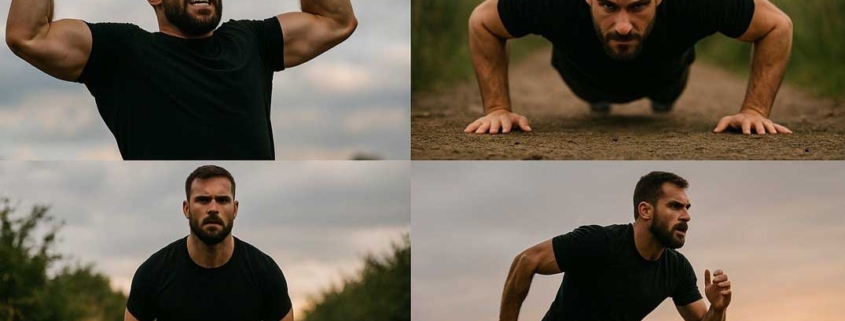Top 5 Military Fitness Exercises to Build Endurance
Looking to build military-level endurance – without enlisting?
Whether your military fitness training is in preparation for a military test or just want to train like a Royal Marine, you’ll need more than long runs and basic circuits. Real military endurance demands functional strength, cardiovascular grit, and mental toughness – all under fatigue, and all built over time.
Here are the top 5 military fitness exercises we use at Commando Temple to build real-world endurance that lasts.
1. Loaded Carries
Why it’s military:
You don’t pass selection without learning to carry weight, far, fast, and without complaint. Loaded carries simulate field tasks and demand total-body stamina.
How to do it:
Load carries can be replicated with weight in the guise of dumbbells, kettlebells, logs, etc. Or even people. (Real-life emergencies will not wait for you to remove your friend or family from misfortune).
Walk 30–60 seconds, rest 60 seconds, repeat 3–5 times. Posture upright, grip tight, TORSO engaged.
What it builds:
Grip endurance, core stability, mental focus, and structural resilience — all critical for military fitness success.
Working with your fellow human as a weight will build confidence in your inner chimp … plus, in a world where we increasingly move away from rough and tumble, we get to sharpen the sword.
2. Hill Sprints… Interval TRAINING
Why it’s military:
Speed, recovery, and terrain adaptation. The military doesn’t happen on a treadmill. Intervals on hills or rough ground mimic real deployment effort. However, if you cant get out to real-world terrain, try steppers and curved treadmills.
How to do it:
Sprint 20–40 seconds uphill, walk or jog down, repeat 6–10 times. Keep your breathing under control and your stride efficient, especially when fatigued.
There are millions of people wanting to improve. Start small. With every success, add small amounts of volume. When you have been adding for 8 – 12 weeks, have a recovery week (rest)
These are guidelines. Respect your flesh.
What it builds:
Anaerobic endurance, explosive leg power, and resilience
3. CALISTHENICS
Why it’s military:
For thousands of years, military units across the globe have had to maintain a ‘fit to fight’ attitude.
The below are great examples of target exercises. Remember to start at your level. Each exercise can be broken down into tangible pieces.
- Press-ups
- Pullups
- Dips
- Isometric holds, including the press-up position
What it builds:
Metabolic conditioning, agility, and mental grit.
4. Step-Ups (LOADED IF APPLICABLE)
Why it’s military:
Think hill climbs, stairwells, or long yomps with kit. Weighted step-ups build unilateral leg strength and endurance — the kind needed for pack marches and long hauls.
How to do it:
Use a 16–20″ box and a weighted backpack or plate carrier.
Try:
- 3 x 12 reps per leg
- Or a 5-minute continuous set. To be increased with each success. Record your repo count.
What it builds:
Leg endurance, balance, and the ability to move under load.
5. Zone 2 Rucking/YOMPING (Weighted Walking)
Why it’s military:
Rucking is the cornerstone of military fitness. It’s not glamorous, but it builds work capacity, joint resilience, and an aerobic foundation better than almost anything else for military-specific purposes.
How to do it:
Load a rucksack (start with 5–10kg), then walk at a brisk pace for 45–90 minutes, ideally on trails or uneven terrain. Stay in Zone 2 heart rate (you should be able to speak, but not sing).
My preference is a 4-minute mile pace. Walk slower if you struggle to keep your heart rate below the upper zone 2. For me that’s a heart rate of 145 – find yours.
What it builds:
Skill and sports-specific endurance to withstand external pressure from your surroundings and kit
How to Combine These Into a Military Fitness Routine
At Commando Temple, we offer military training to civilians and military hopefuls through progressive, sustainable training that builds endurance from the ground up.
Remember, training should be sustainable.
It’s easy to fu@# yourself hard in every session. All bodies are limited in their recovery. Listen. Learn. Improve.
Final Word
You don’t need fancy gear to train start, but you do need commitment, structure, and the right tools. These military fitness exercises are used by elite forces for a reason: they work. If you want to read more about military training, check out our page on Royal Marine fitness requirements.
If you’re serious about becoming stronger, more capable, and ready for anything (physically or mentally) this is where it starts.
Get in touch for more information on our military fitness training programme.


